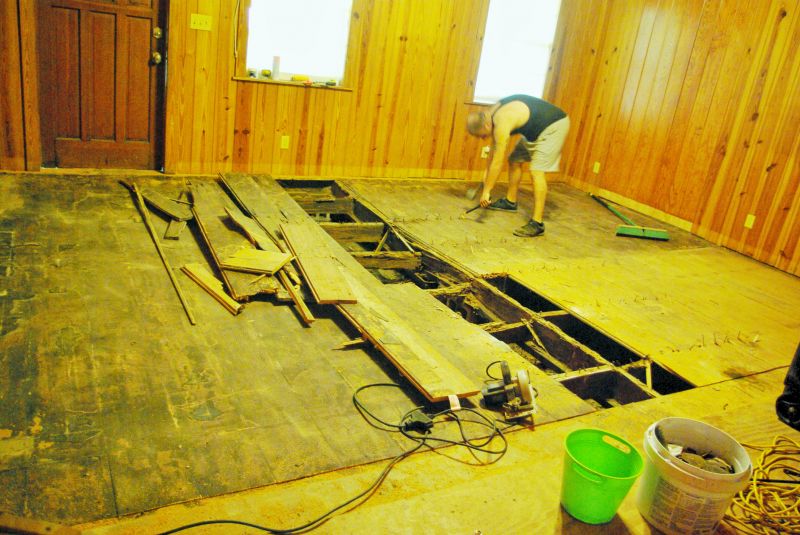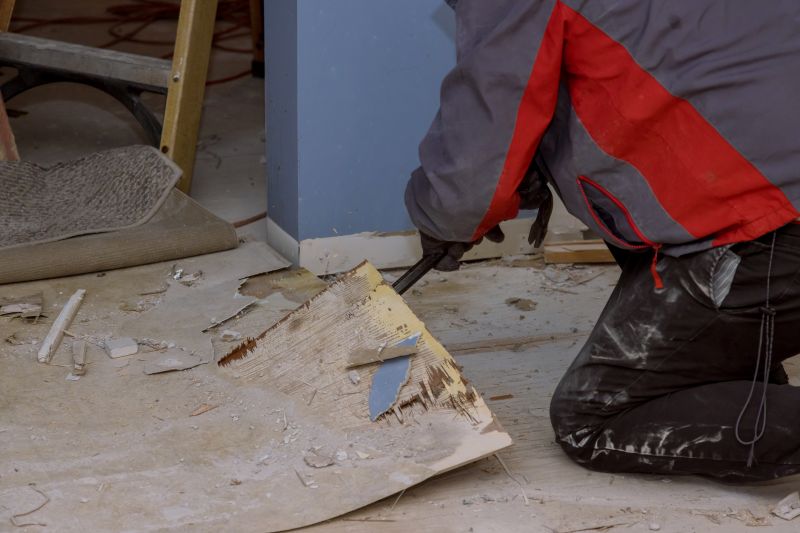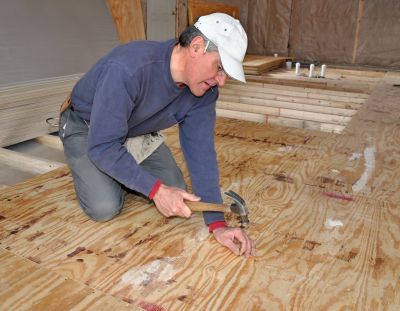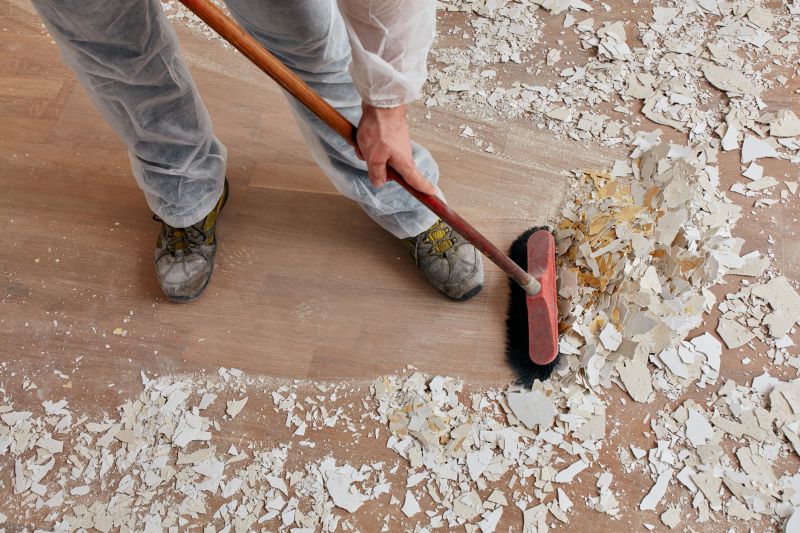Residential Flooring Demolition with Care and Precision
Flooring demolitions involve the careful removal of existing flooring materials to prepare spaces for new installations. This process is essential for renovations, remodeling projects, and space upgrades, ensuring a clean and level surface for the next phase of flooring installation. Proper demolition minimizes damage to underlying structures and reduces waste, making it a critical step in the flooring replacement process.

Demolition of outdated flooring materials to facilitate renovation projects.

Preparing subfloors for new flooring installation after demolition.

Efficient removal and disposal of flooring debris to maintain a clean workspace.
The process of flooring demolition typically begins with a thorough assessment of the existing surfaces. Professionals then carefully remove the flooring, whether it is hardwood, tile, vinyl, or carpet, using specialized tools to prevent damage to the subfloor. The removal process can vary in duration depending on the size of the area and the type of flooring being demolished. On average, a professional can complete flooring demolition in several hours for a standard room, with larger spaces requiring more time.
Hiring a professional for flooring demolition offers numerous advantages. Experienced contractors ensure the removal is performed efficiently, reducing the risk of damage to underlying structures. They also handle debris disposal responsibly and prepare the surface adequately for the next flooring layer. Proper demolition minimizes future issues such as uneven surfaces or hidden damages that could compromise the longevity of new flooring.
Steps Involved in Flooring Demolition
The flooring demolition process begins with site preparation, including clearing the area and protecting surrounding structures. The next step involves removing the existing flooring material, which may require different techniques based on the type of flooring. Once the old surface is removed, the subfloor is inspected for damage or imperfections. Any necessary repairs are made before proceeding with new flooring installation. The final step includes cleaning the workspace and disposing of debris properly.
Evaluating existing flooring and determining the best removal approach.
Careful extraction of flooring to avoid damage to the subfloor.
Checking and fixing the subfloor before new installation.
Removing all demolition debris to ensure a clean workspace.
The importance of professional flooring demolition lies in precision and safety. Skilled contractors use appropriate tools and techniques to efficiently remove flooring while safeguarding underlying structures. Their experience reduces the risk of costly repairs and ensures the surface is properly prepared for the next installation phase.

A space with old flooring fully removed and ready for new installation.

Assessing the condition of the surface before laying new flooring.

A clean, debris-free space post-demolition work.
If planning a flooring upgrade, it is advisable to contact experienced professionals for an accurate assessment and efficient demolition. Proper execution ensures a smooth transition to new flooring, saving time and reducing potential issues during installation.
